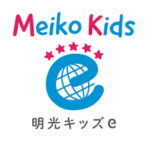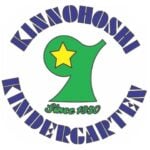 Spotlight
SpotlightSearch Jobs
 Spotlight
Spotlight
【PART-TIME】Bilingual Daycare Support Staff at English Afterschool Program/Daycare (Aoba, Yokohama, Kanagawa)
- Kanagawa, Japan
- ¥1,200 / Hour (Hourly rate during training period (3 months) will be ¥1162)
- English Level
- Fluent
- Japanese Level
- Conversational Level
- Visa Sponsorship
- No

Teach English in Kanagawa – ALT Positions (Domestic Candidates)
- Kanagawa, Japan
- ¥2,400,000 - ¥3,000,000 / Year
- English Level
- Native level
- Japanese Level
- Not necessary
- Visa Sponsorship
- Yes

Relief Teacher in Kanagawa – Immediate Start!
- Kanagawa, Japan
- ¥2,400,000 - ¥3,000,000 / Year
- English Level
- Native level
- Japanese Level
- Not necessary
- Visa Sponsorship
- Yes

English teacher (Kanagawa)
- Kanagawa, Japan
- ¥257,000 - ¥300,000 / Month (negotiable, renewal bonus, vacation days and paid days.)
- English Level
- Native level
- Japanese Level
- Not necessary
- Visa Sponsorship
- Yes
 Spotlight
SpotlightRelief Teacher in Tokyo – Immediate Start!
- Tokyo, Japan
- ¥2,400,000 - ¥3,000,000 / Year
- English Level
- Native level
- Japanese Level
- Not necessary
- Visa Sponsorship
- Yes

English teacher
- Kanagawa, Japan
- ¥220,000 - ¥250,000 / Month
- English Level
- Fluent
- Japanese Level
- Not necessary
- Visa Sponsorship
- Yes

English Teacher for Dual (ENG/JAP) position at Kinnohoshi Kindergarten in Yokohama.
- Kanagawa, Japan
- ¥280,000 - ¥300,000 / Month (Relocation stipend: ¥100,000)
- English Level
- Fluent
- Japanese Level
- Conversational Level
- Visa Sponsorship
- Yes

Private Elementary, ESL Instructor
- Kanagawa, Japan
- ¥250,000 - ¥300,000 / Month (+ commuting expenses)
- English Level
- Native level
- Japanese Level
- Basic Level
- Visa Sponsorship
- Future possibility / Renewal
Native English Teacher Contract Employment (40 hrs/Week) Weekends off
- Kanagawa, Japan
- ¥250,000 - ¥250,000 / Month
- English Level
- Native level
- Japanese Level
- Not necessary
- Visa Sponsorship
- Yes
English Teacher at a privately-owned school – start any time
- Kanagawa, Japan
- ¥20,000 - ¥20,000 / Day (Transportation fee paid on top of daily rate)
- English Level
- Native level
- Japanese Level
- Conversational Level
- Visa Sponsorship
- Future possibility / Renewal
 Spotlight
SpotlightZenPlus Customer Support – Expand your knowledge of Ecommerce operations!
- Osaka, Japan
- ¥270,000 / Month (or more per month - Based on previous experience and ability. Bonus twice a year in June and December.)
- English Level
- Business Level
- Japanese Level
- Business Level
- Visa Sponsorship
- Yes
Yokohama big city Luxury Hotel Staff wanted, must be higher JLPT N2up Visa support available
- Kanagawa, Japan
- ¥3,000,000 - ¥4,000,000 / Year
- English Level
- Business Level
- Japanese Level
- Business Level
- Visa Sponsorship
- Yes
 Situated mostly between Mt. Fuji and the Pacific Ocean, Kanagawa comprises the southeastern corner of the Tokyo megalopolis, in particular with the very huge port cities of Kawasaki and Yokohama. The southeastern and western areas are less urbanized with the ancient city of Kamakura being a huge tourist draw and many onsens and resorts in the Sagami Bay area and foothills of Mt. Fuji or the Hakone area.
Situated mostly between Mt. Fuji and the Pacific Ocean, Kanagawa comprises the southeastern corner of the Tokyo megalopolis, in particular with the very huge port cities of Kawasaki and Yokohama. The southeastern and western areas are less urbanized with the ancient city of Kamakura being a huge tourist draw and many onsens and resorts in the Sagami Bay area and foothills of Mt. Fuji or the Hakone area.
As one of the first places in Japan to open up for foreign trade from the Meiji era, Kanagawa has history and culture that is said to be more congenial to foreign lifestyles, e.g., more international schools, ethnic districts like Chinatown and Koreatown, lots of foreign restaurants and even a foreign cemetery, which has become a big tourist attraction among Japanese in recent decades. Japanese often refer to Yokohama as being a more comfortable place to live with a bit more ambience or sophistication than Tokyo or its other surrounding areas. Most of the eastern side of Kanagawa is within reasonable commuting range to Tokyo.
Kanagawa's population is nine million with 3.7 million of these people residing in the capital, Yokohama City and 1.5 million in Kawasaki City. The climate is humid subtropical with hot and humid summers and cool winters and rare light snowfall on occasion. The rainy season is in June, and there are a handful of typhoons each year in the fall and spring. Kanagawa is also seismically active with frequent minor earthquakes, an occasional good shaking and the Big One hitting about once every 75 to 100 years. However, nearly every building is safely designed and built not to collapse even during the Big One.
Major industry in Kanagawa has centered around its two huge port towns of Yokohama and Kawasaki. This includes shipbuilding, heavy industry and just about every other type of business and industry, which have congregated around a variety of industry-specific clusters near these ports. There are about 250 English conversation schools that hire native English teachers with most of them located in the cities of Yokohama or Kawasaki and about half as many other types of educational institutions that may employ foreign teachers. Like Tokyo the hospitality industry is comprised of large numbers of restaurants and hotels, many of which will employ foreigners with proper visas.
Kamakura is the main tourist attraction in Kanagawa. Said to be the cradle of Nichiren Buddhism during the 13th century, there are dozens and dozens of temples, shrines, historical sites, etc. spread across the city that would take an entire day with an experienced guide to see only half of, but the main attraction is the outdoor Great Buddha at the Taiizan Kotokuin Shojosen-ji Temple.
Other things to see and do include Chinatown (Yokohama), Koreatown (Kawasaki), the foreigner cemetery (where a great number of historical figures from the Meiji era onward are buried in western-style graves, a novelty in Japan), Hakkeijima Sea Paradise (large amusement park with aquarium), Enoshima (nearby island with shrine, park, observation tower, caves and great beaches), Shonan Beach (the most visited beach in the Kanto area), Odawara Castle, Hakone (onsen area at Mt. Fuji), Kawasaki Daishi Temple, the Minato Mirai district, which includes Yokohama Landmark Tower (Japan's second-tallest building with views of Tokyo Bay and Mt. Fuji), Cosmo World amusement park, Kishamichi Promenade, Nippon Maru (a four-masted sailing ship, docked on the harbor as a museum, and the Yokohama Museum of Art, etc.
Major museums in Kanagawa include the Kanagawa Prefectural Museum of Cultural History in Yokohama, the Japan Coast Guard Museum in Yokohama, the Japan Open-air Folk House Museum in Kawasaki (historical houses, water-mill hut, Kabuki stage, etc.), the Toshiba Science Museum in Kawasaki, the Yokosuka Museum of Art, the Kanagawa Prefectural Museum of Natural History in Odawara, the Kamakura Kokuhoukan Museum (housing art and objects from the 12th to 16th centuries), the Hakone Open-Air Museum (sculptures), the Pola Museum of Art in Hakone, (European and Japanese art, mostly underground with a forest trail), the Hakone Venetian Glass Museum (Glass Forest), etc.
Some of the larger festivals in Kanagawa include the Kamakura Festival in April, the Odawara Hojo Godai Festival in May, the Yokohama Port Anniversary Festival in June, the Hiratsuka Tanabata Festival in July, the Yugawara Kifune Festival in July, the Ota Fireworks Festival on the Tamagawa River in mid-August, etc. Worthy of special mention and one of the oddest festivals in Japan is the Kanamara Festival (literally the Steel Penis Festival). Popular among prostitutes, who prayed for protection from STDs, when it started in 1969, the Kanayama Shrine claims other divine protection to participants for prosperity and harmony in marriage, easy child birth, etc. In recent times this festival, with its giant penis floats and penis-shaped handicrafts and food items, has become quite an attraction for foreign tourists seeking the ultimate Japan photo op.
Ramen is very popular in Kanagawa so much so that there is even a Ramen Museum in Yokohama as well as multiple ramen festivals. Local specialties include iekei ramen, which uses a soya-pork broth and straight noodles, and Sanmamen, which is served in a shoyu broth and covered in stir-fried vegetables. In Miura City there a misaki-maguro ramen, which features noodles kneaded with seaweed and soup broth from a well boiled tuna head and topped with pieces of tuna.
Odawara-don is multiple seafood items on rice and traditionally served in handcrafted Odawara lacquerware. Beef nabe is a fusion dish that originated in Yokohama during the Meiji era. It combines chunky pieces of beef desired by Westerners with miso and spring onions. Cheap and said to be delicious, grilled pig intestines (shirokoro) has long been local soul food in Atsugi City where apparently fresh pork offal has been widely available. It is easy to imagine this "delicacy" originating from postwar shortages and using scraps from the nearby U.S. naval air station, but shirokoro is said to have been a local food since ancient times. Finally, kaigun curry (navy curry) is actually ordinary Japanese curry (flour thickened with simple curry powder) as opposed to Indian curry (onion paste thickened and much more variety of spices), but it is said to have originated in Yokosuka where it was popular among sailors who likely brought the curry spice from Southeast Asia.










